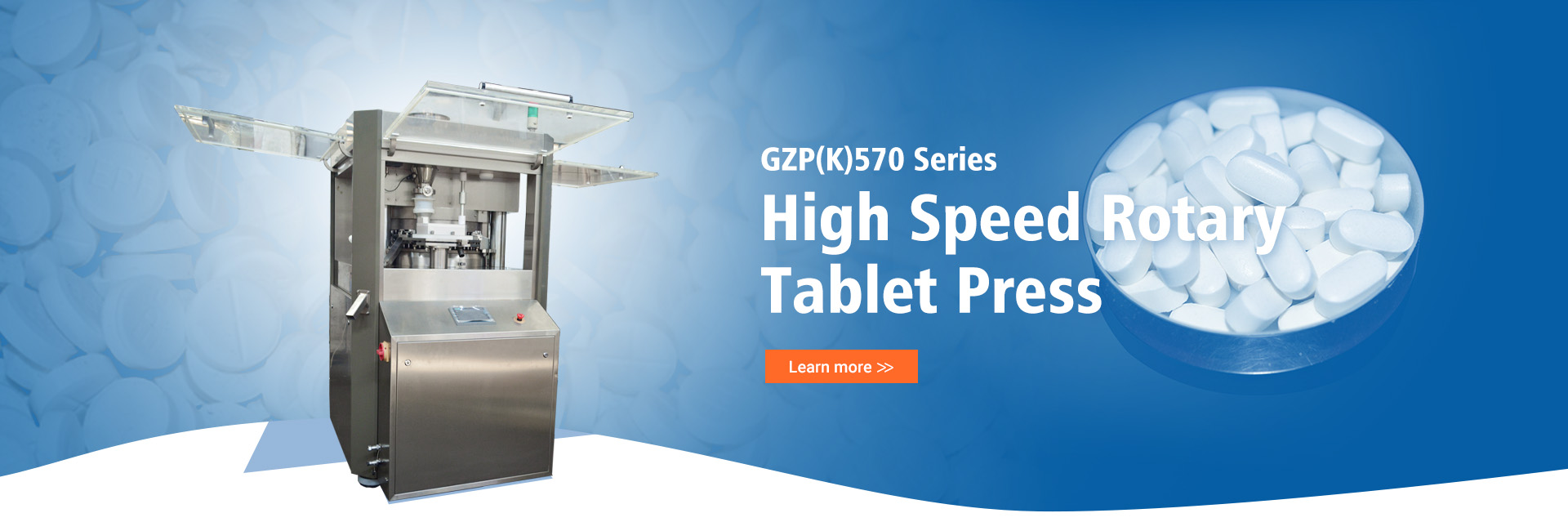1.The basic parts of the tablet press
Punch and die: Punch and die are the basic parts of the tablet press, and each pair of punches is composed of three parts: upper punch, middle die and lower punch. The structure of the upper and lower punches is similar, and the diameters of the punches are also the same. The punches of the upper and lower punches are matched with the die holes of the middle die, and can slide up and down freely in the middle die hole, but there will be no gaps where the powder can leak. . The die processing size is a unified standard size, which is interchangeable. The specifications of the die are represented by the diameter of the punch or the diameter of the middle die, generally 5.5-12mm, each 0.5mm is a specification, and there are 14 specifications in total.
The punch and die are under great pressure during the tableting process, and are often made of bearing steel (such as crl5, etc.) and heat treated to improve their hardness.
There are many types of punches, and the shape of the punch is determined by the desired shape of the tablet. According to the shape of the die structure, it can be divided into circles and special shapes (including polygons and curves); the shapes of the punch sections are flat, hypotenuse, shallow concave, deep concave and comprehensive. Flat and hypotenuse punches are used to compress flat cylindrical tablets, shallow concave punches are used to compress biconvex tablets, deep concave punches are mainly used to compress coated tablet chips, and integrated punches are mainly used to compress biconvex tablets. Shaped flakes. In order to facilitate the identification and taking of medicines, marks such as the name of the medicine, the dosage and the vertical and horizontal lines can also be engraved on the end face of the die. For compressing tablets of different doses, a die with an appropriate size should be selected.
2.The working process of the tablet press
The working process of the tablet press can be divided into the following steps:
①The punch part of the lower punch (its working position is upward) extends into the middle die hole from the lower end of the middle die hole to seal the bottom of the middle die hole;
②Use the adder to fill the middle die hole with medicine;
③ The punch part of the upper punch (its working position is downward) falls into the middle die hole from the upper end of the middle die hole, and goes down for a certain stroke to press the powder into tablets;
④The upper punch lifts out of the hole, and the lower punch lifts up to push the tablet out of the middle die hole to complete a tableting process;
⑤Push down to the original position and prepare for the next filling.
3.The principle of tableting machine
① Dosage control. Various tablets have different dosage requirements. Large dosage adjustment is achieved by selecting punches with different punch diameters, such as punches with diameters of 6mm, 8mm, 11.5mm, and 12mm. After the die size is selected, the small dose adjustment is by adjusting the depth of the lower punch extending into the middle die hole, thereby changing the actual length of the middle die hole after back sealing, and adjusting the filling volume of the drug in the die hole. Therefore, there should be a mechanism for adjusting the original position of the lower punch in the die hole on the tablet press to meet the dosage adjustment requirements. Due to the difference in specific volume between different batches of powder preparations, this adjustment function is very necessary.
In the dose control, the action principle of the feeder also has a considerable influence. For example, the granular drug relies on its own weight and freely rolls into the middle die hole, and its filling condition is relatively loose. If multiple forced entry methods are used, more drugs will be filled in the die holes, and the filling situation will be more dense.
② Control of tablet thickness and compaction degree. The dosage of the drug is determined according to the prescription and pharmacopoeia and cannot be changed. For the time limit of storage, preservation and disintegration, the pressure of a certain dose is also required during tableting, which will also affect the actual thickness and appearance of the tablet. Pressure regulation during tableting is essential. This is achieved by adjusting the downward amount of the punch in the die hole. Some tablet presses not only have the upward and downward movements of the upper and lower punches during the tableting process, but also have the upper and lower movements of the lower punches,
and the relative movement of the upper and lower punches completes the tableting process. However, the pressure regulation is mostly realized by the mechanism of adjusting the upward and downward flow to realize the pressure regulation and control.
Post time: May-25-2022



